The popularity of bracelets just keeps increasing, and having fallen in love with some similar styles, I decided to tackle copper soldering and hand formed wire bracelet making in the same project.
This project requires very few jewelry findings, but it uses a wide variety of jewelry making tools and supplies.
Gather together the following supplies:
And these tools:
- Heavy Duty Wire Cutters
- Flat Nose Pliers (I use the Wubbers Medium Tip)
- Wubbers Medium Bail Making Pliers
- Steel Block
- Nylon Jaw Pliers
- Nylon Hammer
- Chasing Hammer
- Butane Torch
- Butane
- Ceramic Fire Block
- Ruler
- 0000 Steel Wool
- Heat Proof Surface
- Metal or Glass Container of Water
- Paper Towel or Rag
- Large Jeweler’s File and Small Diamond Files
- Bracelet Mandrel or Form
- Safety Glasses
Follow these steps to complete your DIY bracelet:
Start by unspooling the copper wire. I cut a piece about 14″ long, but you probably won’t need more than a 12″ piece.
Use your hands and the nylon jaw pliers to straighten the wire as much as possible. This is accomplished by pulling the wire between the jaws.
If additional straightening is needed, lightly hammer the wire with the nylon hammer on a steel block.
Approximately 1-1/4″ from one end of the wire, bend the wire into a deep V shape with the flat nose pliers.
With the bail making pliers, grasp the short end of the wire, just above the V shape, and with your hands, bend the end around the larger of the mandrels.
Re-adjust the pliers, and copy this shape with the long end of the wire on the opposite side of the V shape.
The heart must be shaped above the wire tail in order for the clasp to close correctly.
Bend the short end of the heart open slightly and file the end at an angle. Keep filing and testing it against the long end until it matches up nicely, eliminating gaps. This will help prevent difficulties when soldering.
Your wire heart is now ready to be soldered …
Set up your soldering station with a heat proof surface, your soldering block, and your torch. Keep a metal or glass container of water nearby for quenching.
Lay the heart portion of the bracelet on the soldering block, making it as steady as possible. You may need to prop up the loose end of the wire for the heart to lay flat.
TIP: For the best solder join, clean the wire and the solder with steel wool.
TIP: Our “I Love Copper Solder” blog post contains lots of great additional hints for successful soldering with copper solder.
Let out some of the copper solder, allowing enough room to grip the wire, without getting close to the flame when soldering.
Put on your safety glasses, and ignite the torch. NOTE: a torch low on fuel may not produce a hot enough flame for soldering.
Focus the flame on the base of the heart, where you will be soldering. Watch for the metal to start glowing, and then touch the end of the solder to the copper form. I got a little over-enthused, and created a large “rustic” solder join. If you are careful, you can make the join much smaller, which means less filing in the next step.
When the solder has begun to flow, move the solder away from the piece, careful to place it where it won’t cause any damage.
Using tweezers, drop the heart end of your bracelet in water to quench it. It should cool enough to touch within a minute or so.
When cool, remove the heart from the water, and examine your solder join. If you joined it carefully, you may not need to file it down.
If you have extra solder that you want to get rid of, do so by filing. The large file can be laid flat, and the piece filed against it.
TIP: Always file in one direction – not back and forth.
The small diamond files can help remove excess solder from the inside of the shape. There are a variety of file shapes to use.
You can refine your join further with sanding pads and steel wool, if desired, until the join reaches the desired appearance.
Now it’s time to finish your bracelet …
With your hands, bend the long end of the wire into the size and shape of bracelet that you desire. A bracelet mandrel or other rounded object can help you achieve a consistent shape.
I made this bracelet in a fairly large size, and formed an oval shape. When you have brought the tail of the wire around to the heart shape, overlap with the loop of the heart by about 1/2″ and trim the wire. The completed bracelet used just about 12″ of wire.
Pull the wire to one side, and flatten the wire end with the chasing hammer on the steel block. This will also harden the hook.
File any rough edges from this end, round out the end of the wire, and then form an outward facing hook by bending the flattened wire over the small size mandrel on the mandrel pliers.
Position the hook end of the wire back into position.
To give the color of the bracelet more depth, and to help camouflage the filed solder, patina the finished bracelet with Novacan Black. I use a little steel wool on the copper before dipping in the patina, to help remove any body oils that may have transferred. I poured just a bit of the patina into a cup, and rotated the bracelet into the patina for 15-30 seconds at a time. The patina can be returned to the bottle for future use.
Rinse your bracelet, dry it, and rub with the steel wool for a warm, antiqued look.
Now, wear and enjoy (or make an armful for others). ♥ Hearts! ♥
~ Rita

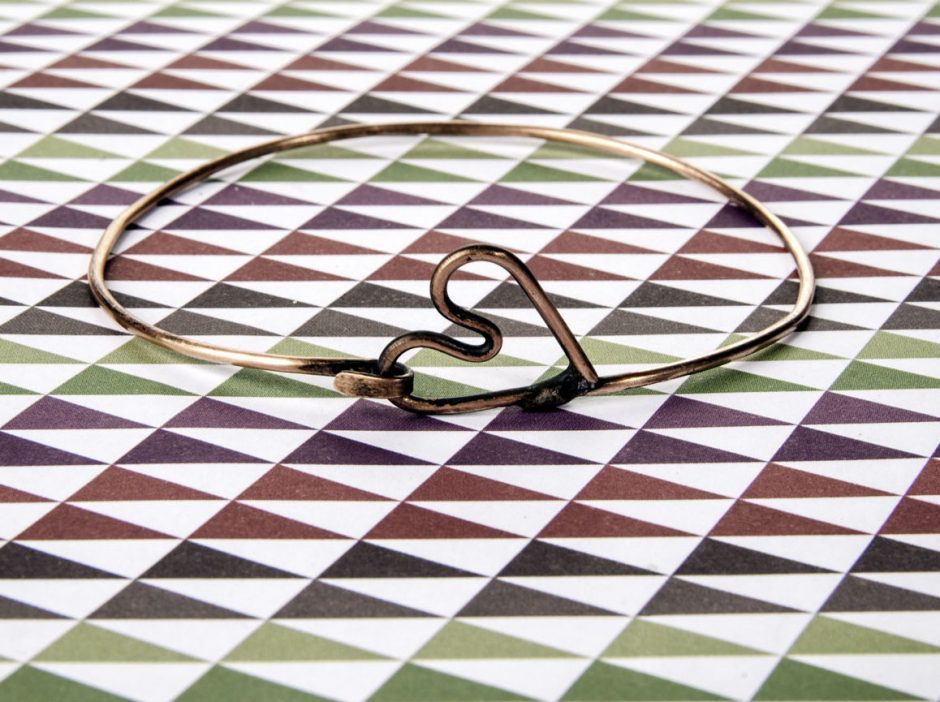
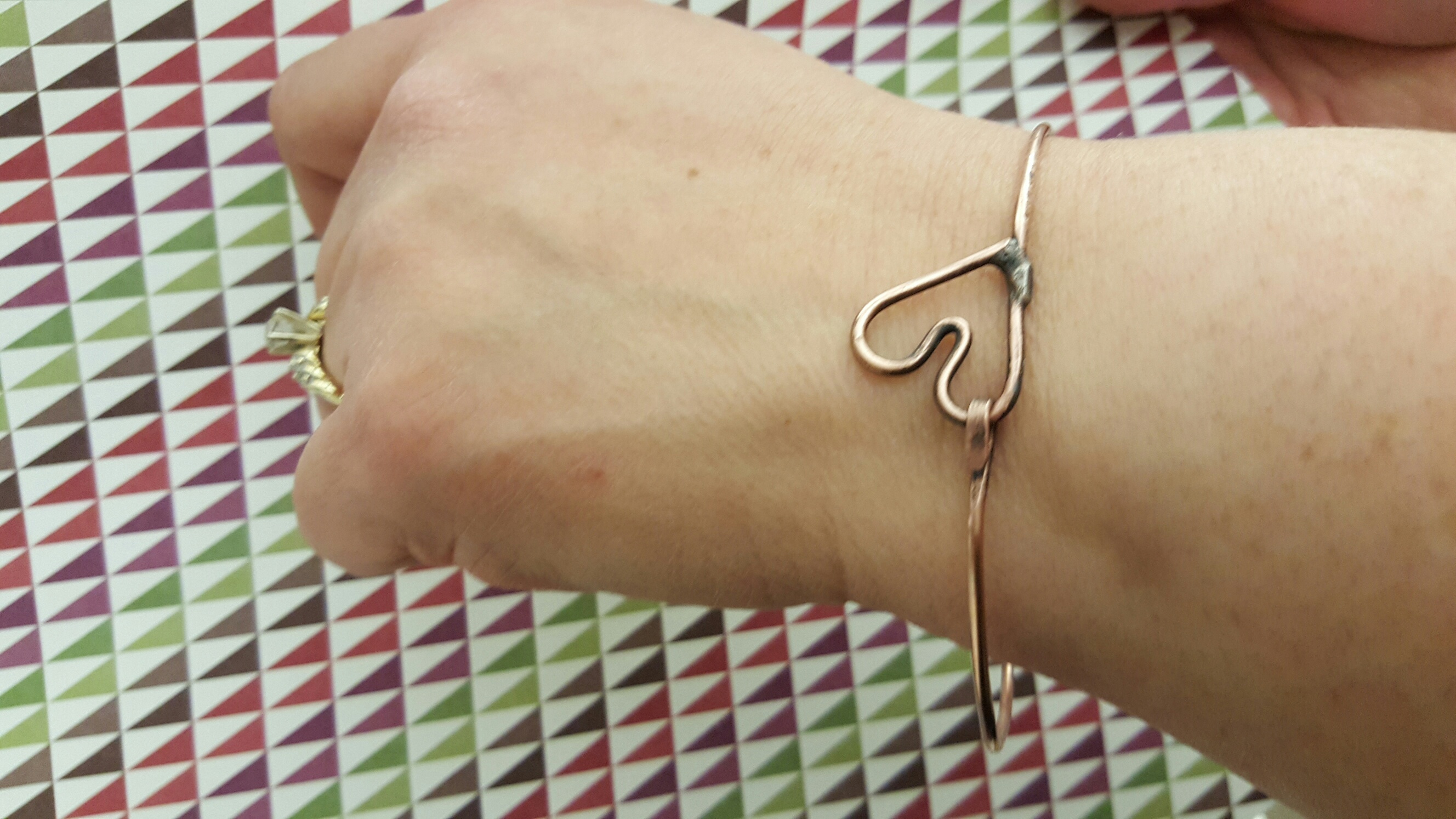


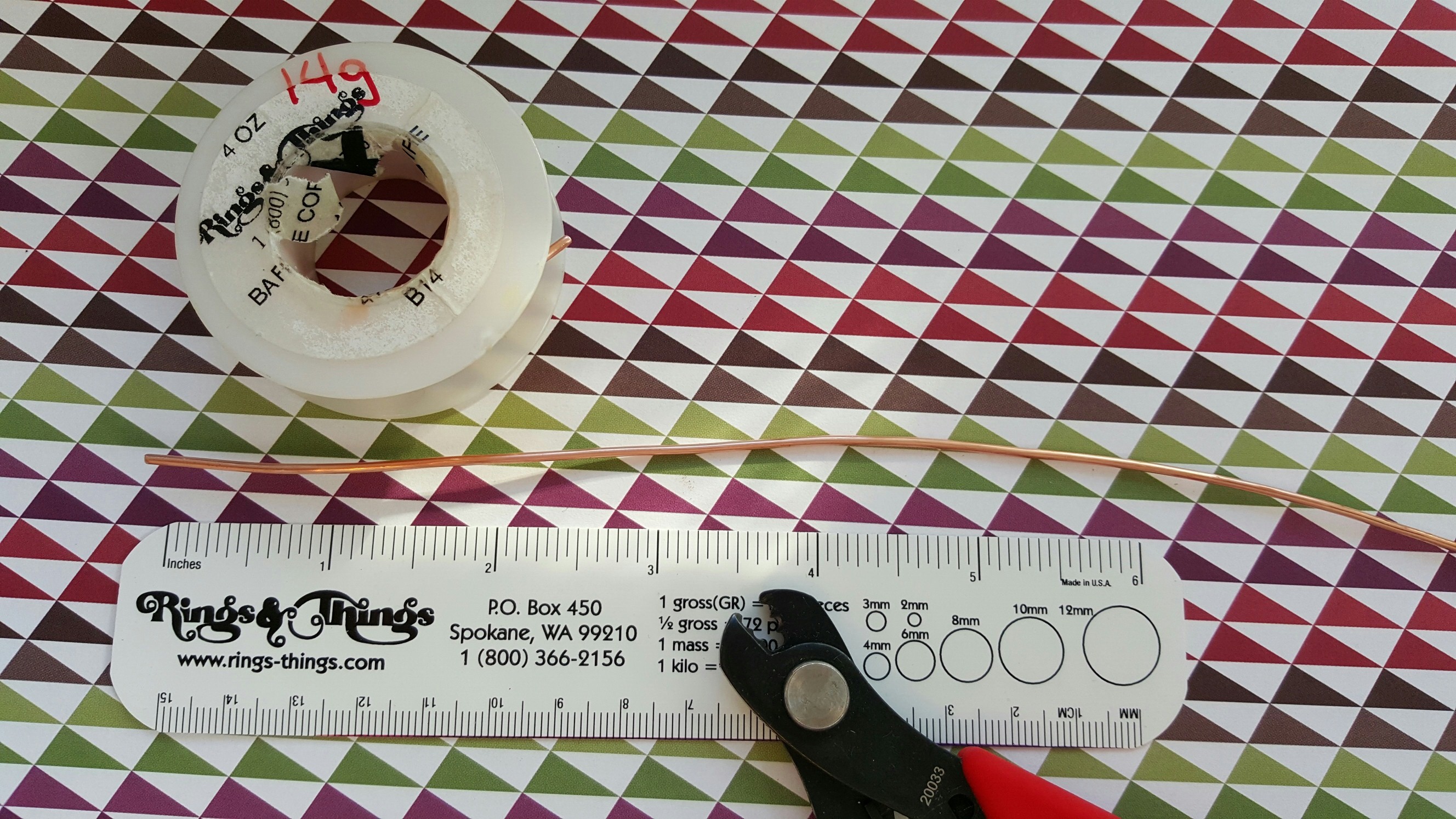


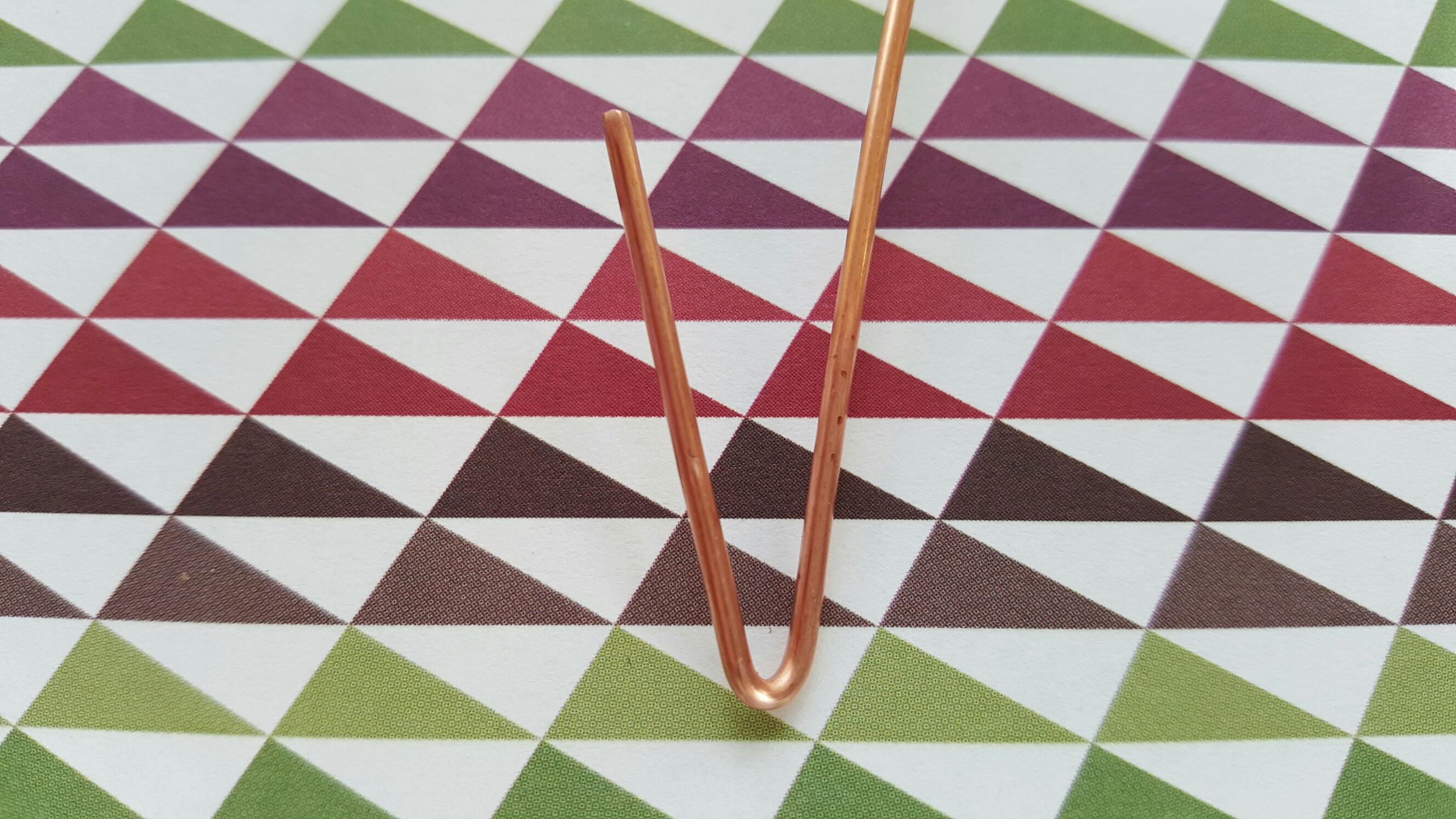


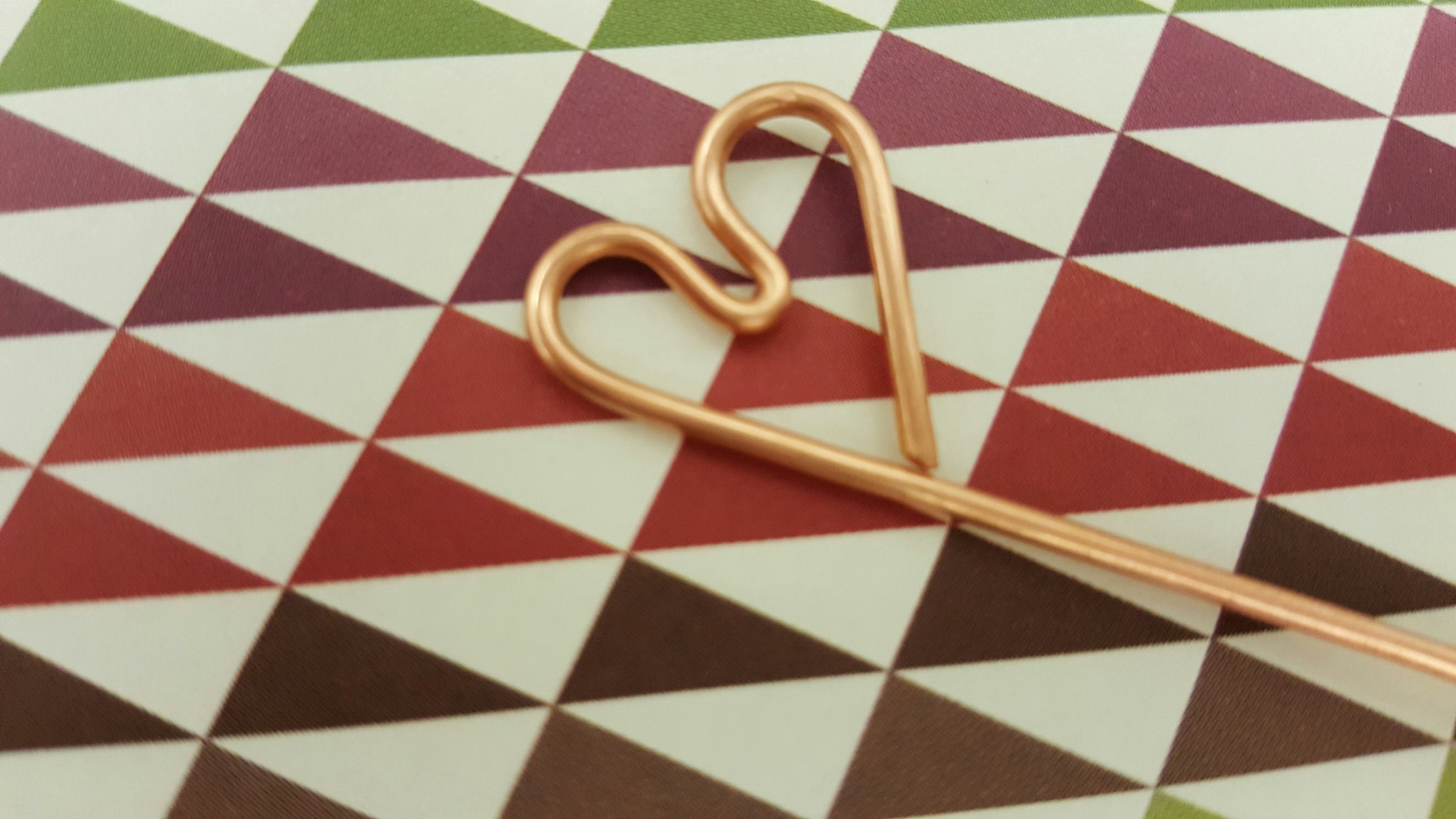


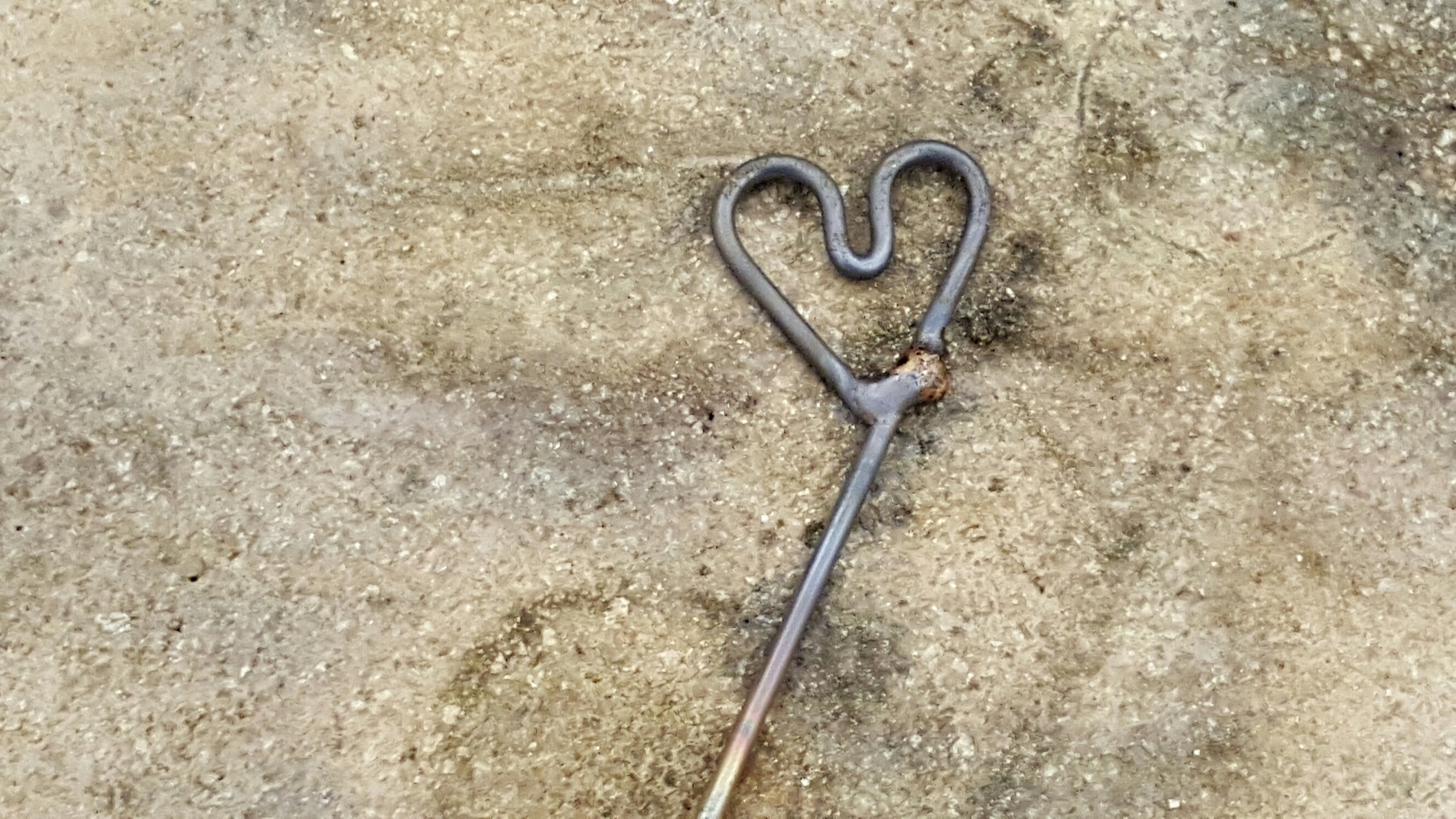
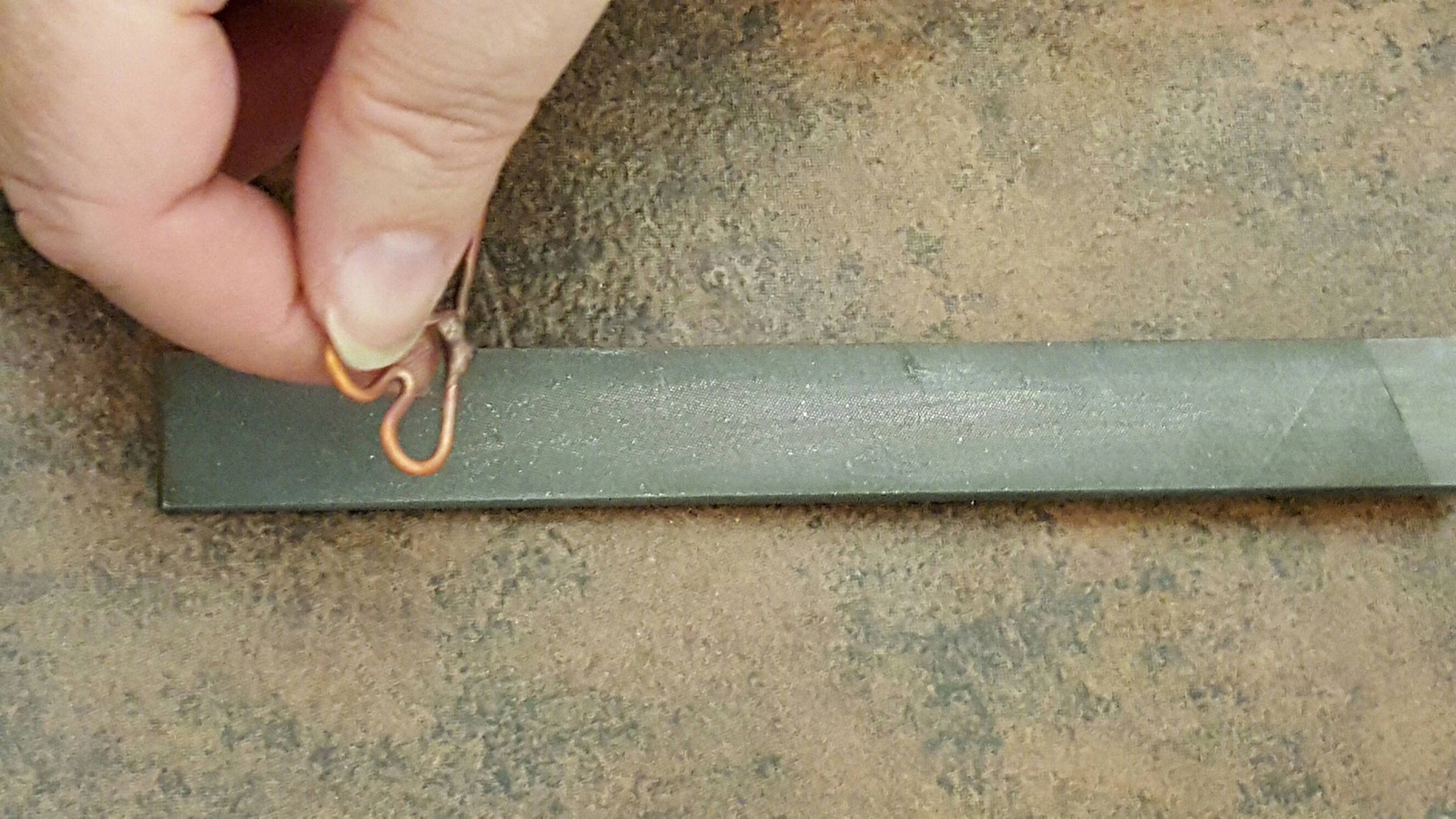
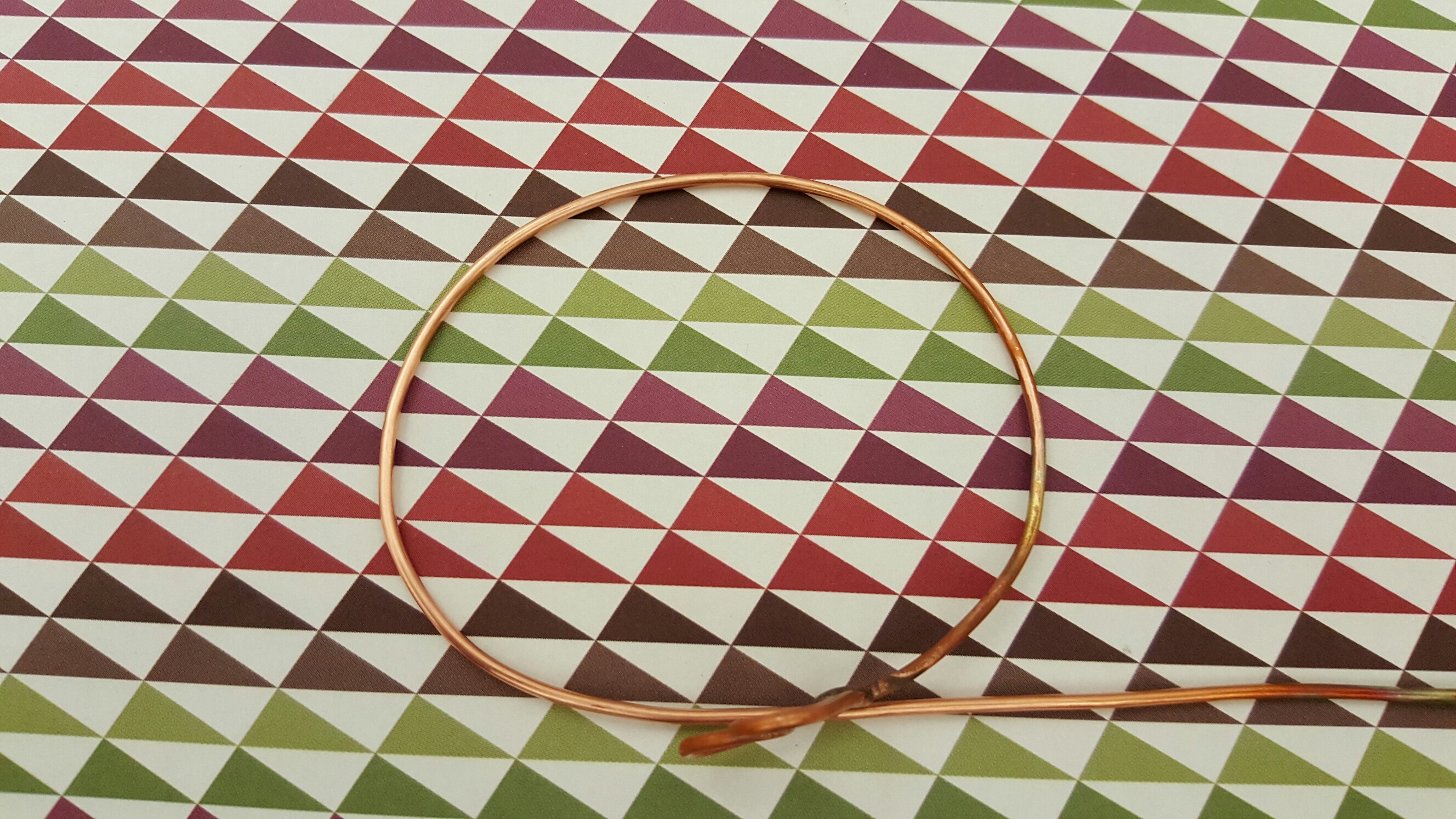
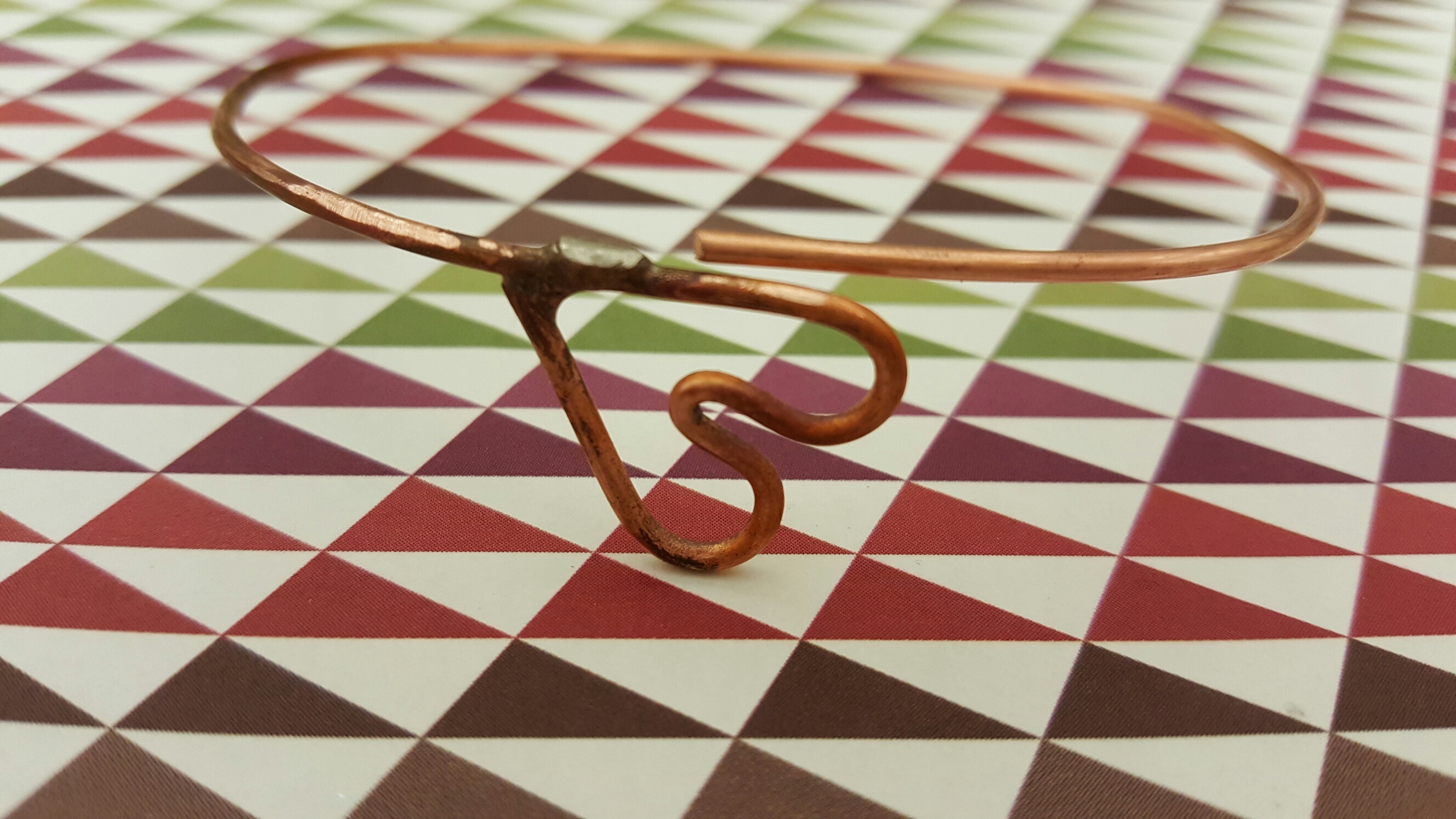

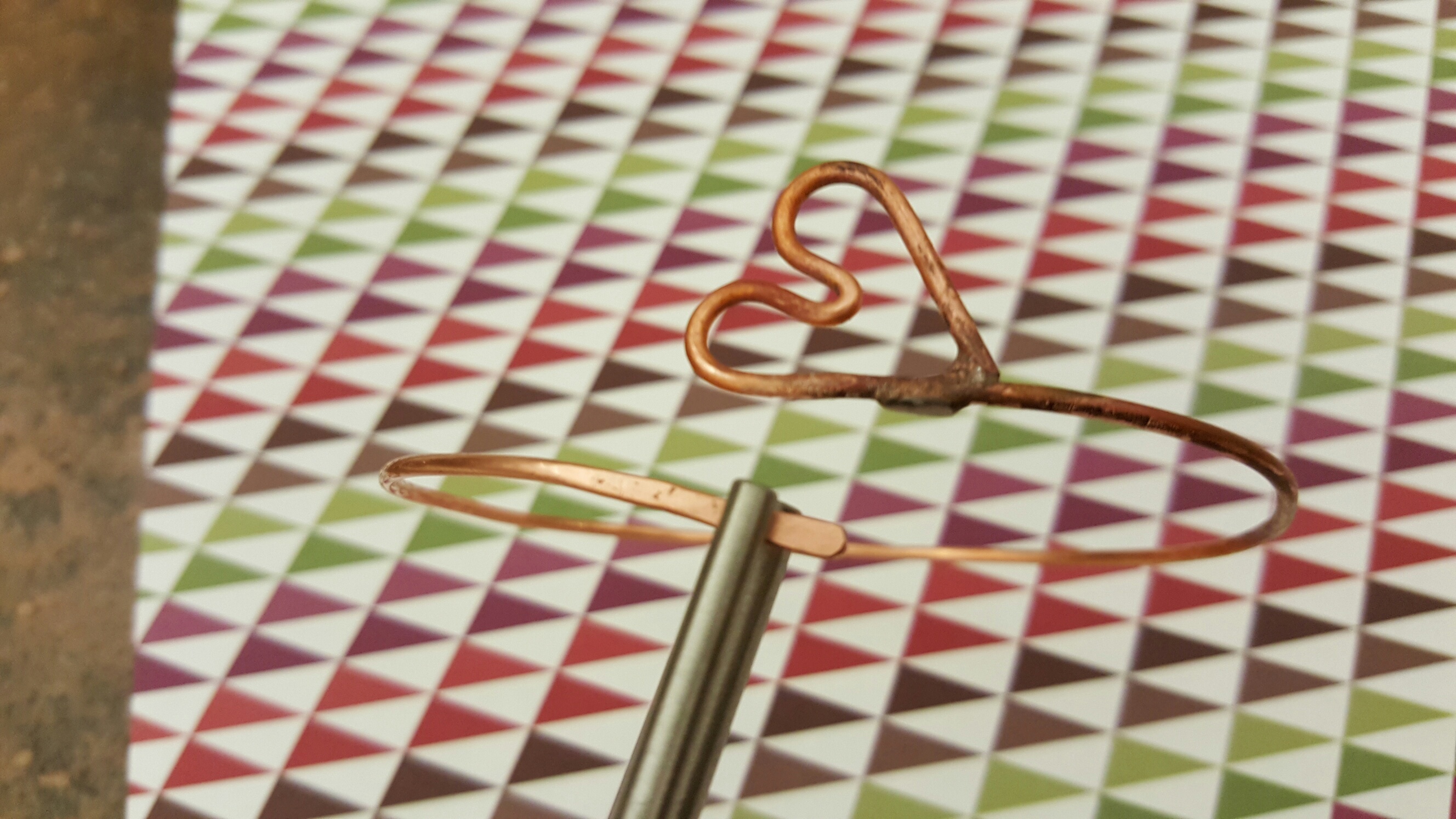
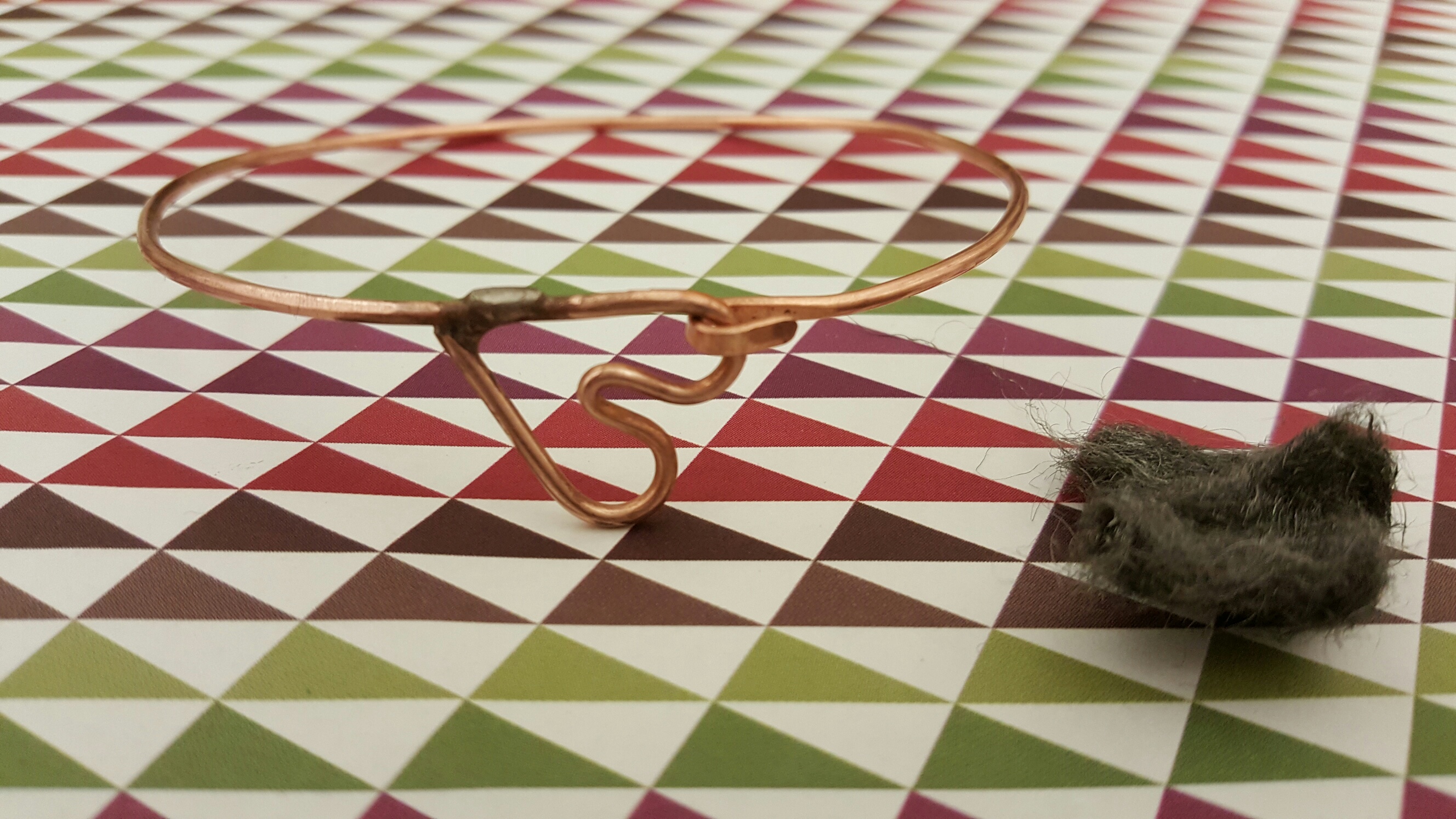

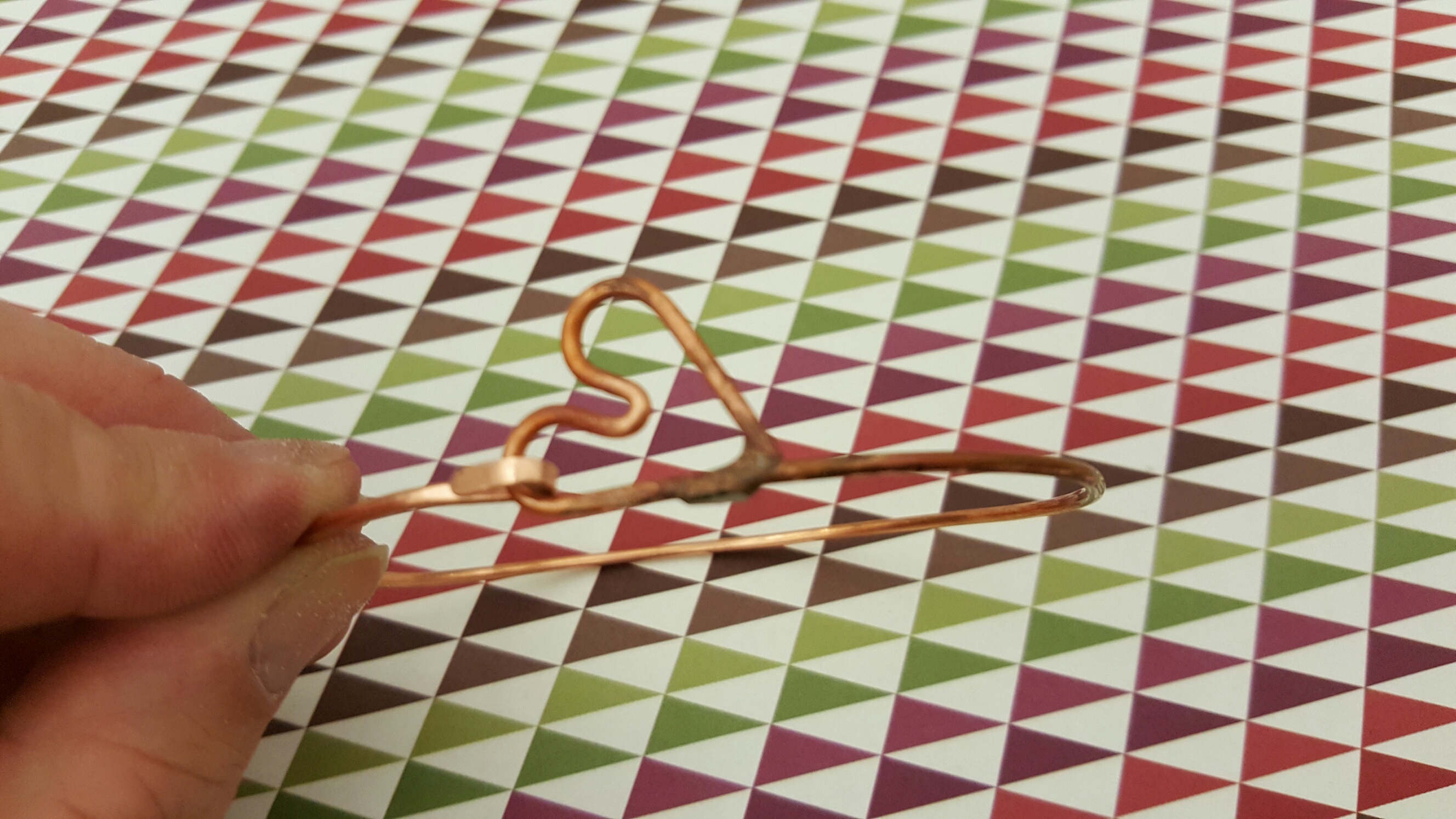

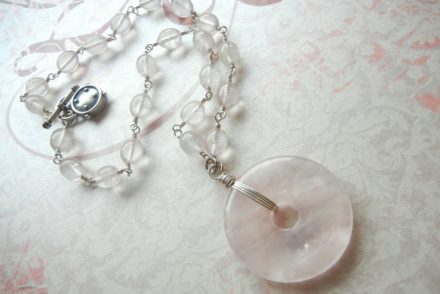
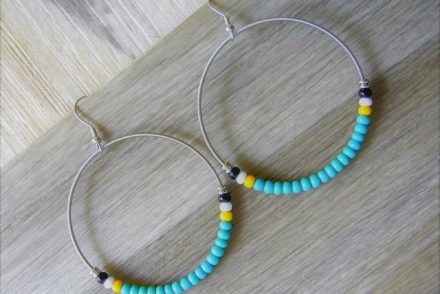
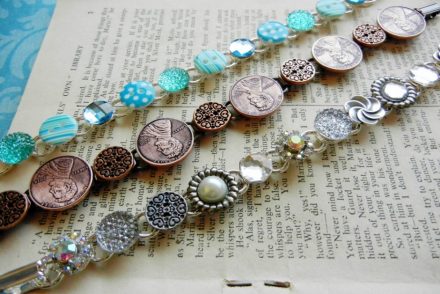
2 Comments
Hi,
I’m a coppersmith and work mostly with sheet copper.
You should use brass wool not steel wool to clean your pieces. The steel wool will impregnate the copper with particles of sell which will oxidize ie. rust, over time in contact with the copper
Hi Darin,
Thank you for the input. I always appreciate hearing from a professional.
I had not previously heard of brass or bronze wool, so I did some research, and it is often recommended for cleaning and polishing items in high moisture environments for less likelihood of rust. It doesn’t look to be as easy to locate, but if available, certainly seems like a good idea to use.
I’ve never had any trouble with rust on copper in the past, but that might be because Spokane is quite arid, and the moisture isn’t much of an issue.
Rita